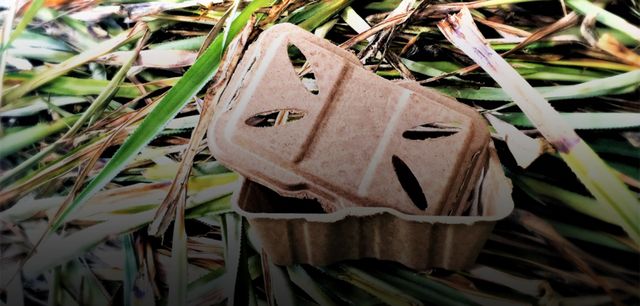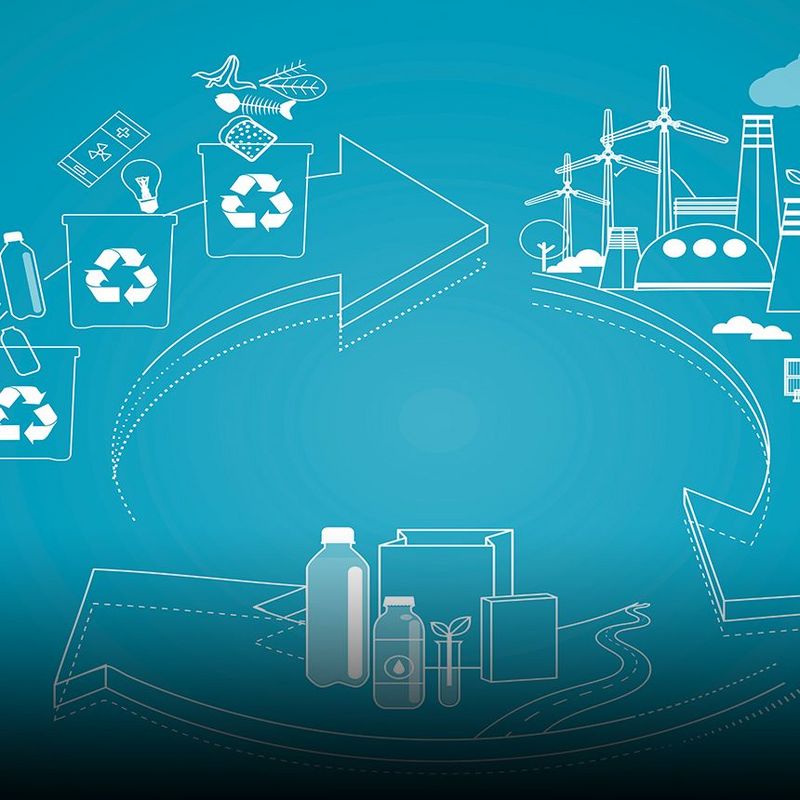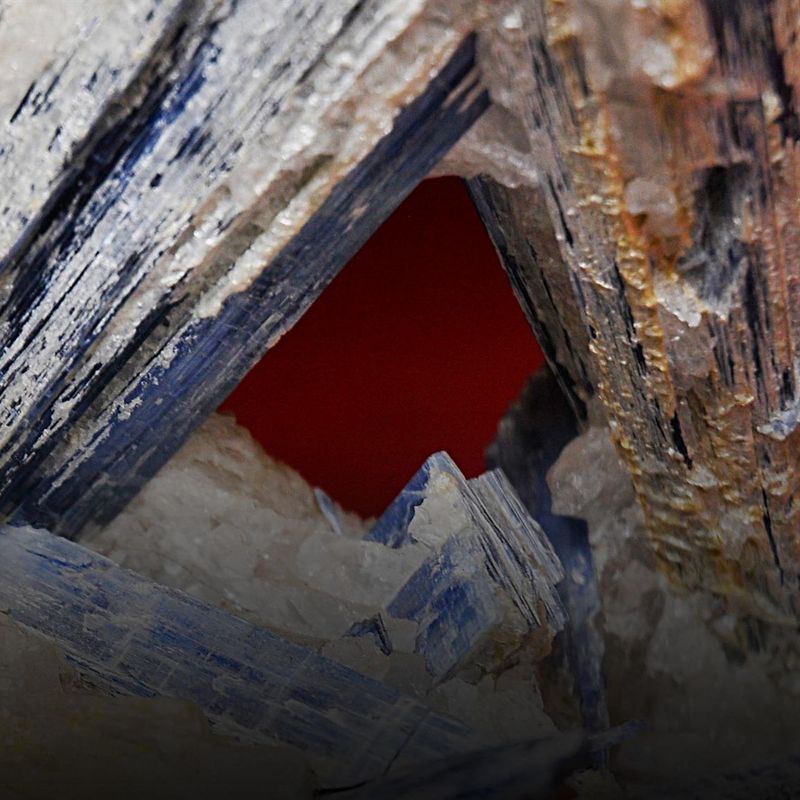29. April 2021
It doesn't always have to be plastic, leather or cotton: more and more start-ups and companies are turning to more environmentally friendly alternatives – and discovering the potential of fungus, plant residues, sour milk and used plastic bottles for themselves.
Using shells as spoons
360 million plastic ice cream spoons end up being thrown away worldwide every year. This is set to change in the EU. From July this year, single-use plastic will be banned in Europe. Heidelberg-based start-up Spoontainable has been offering an edible alternative since mid-2019. With their digestible cutlery, the founders have placed their faith in upcycling, turning waste into things of greater value. Their spoons are made of the shells that are generated by the thousands of tonnes in food production: oat husks and coconut shell fibres, for example. Also chewable are the spoons made by Kulero in Göttingen. According to the start-up, five million plastic spoons have already been replaced with its cutlery made of oats, millet and wheat. Alongside ice cream parlours, cafés and private customers, Kulero has now forged links to other customers: prisons and psychiatric hospitals. This is because people can’t hurt themselves or others with edible cutlery.
© SpoontainableThe start-up Spoontainable from Heidelberg produces spoons from edible leftovers of food production.
Packaging from plant residues
The disposable plates and packaging produced by Bio-Lutions may not be edible. However, they do consist exclusively of plant residues and can either be composted after use or burned in a relatively climate-friendly manner. The German company obtains the plant waste for its factory in Bangalore, India, from local farmers, thereby offering them another source of income. In the factory, the plant residues are cleaned, chopped, dried and ground into particularly fine particles of fibre in a special machine. Water is added to produce a fibrous pulp which can be compacted into various forms: from vegetable packaging to plates. The process saves water and energy and does not require the chemical additives which are common in the pulp and paper industry. The idea behind local production is to keep the transport routes short and the carbon footprint small. In terms of pricing, Bio-Lutions aims to keep pace with plates and packaging made of paper, cardboard and plastic – and, in the spirit of the circular economy, it is seeking to avoid using raw materials that are needed for food, animal feed or biofuels. Possible materials range from rice straw to pineapple leaves, vines and tomato plants to wheat straw. Wood shavings and cotton residues can also be processed. Bio-Lutions is currently building a second factory in Schwedt, Brandenburg, whose production is expected to avoid 30,000 tonnes of plastic waste per year. The vision of the founders is to supply supermarkets with fruit and vegetables packed in their own residues.
From old milk to new clothes
Around two million tonnes of milk are disposed of as waste in Germany every year. A company from the upper Palatinate region is making alternative use of waste from cheese making and sour milk by turning it into new clothes. The idea behind it is not all that new: people were attempting to turn the milk-white casein into fabrics as long ago as the 1930s – but the process required a lot of water and toxic chemicals. Designer and microbiologist Anke Domaske has developed a process that requires only two litres of water to produce one kilo of “Qmilk” fibres, uses little energy and does not generate waste. The casein which is contained in the flakes of sour milk is dried, mixed with beeswax, wheat bran and water, heated and kneaded. The resulting mass is then pressed into fibres by spinning nozzles and spun into threads. These are smooth and lustrous like silk and can be composted and, theoretically, even eaten. However, they are at their most effective when used externally: their antibacterial and temperature-regulating properties are said to particularly benefit allergy sufferers and people with neurodermatitis. The Qmilk is found in fashion collections, toilet paper, milk cosmetics, baby teething rings and dog bones. Outdoor gear manufacturer Vaude uses the milk fibres to make backpacks which mould themselves better to the wearer’s body.
Mushrooms that take on leather
Since the Stone Age, leather has been protecting our feet from sharp stones and our bodies from the cold. It’s no wonder then that, with growing environmental awareness, more animal-friendly alternatives with similar properties are being researched, developed or rediscovered. Take, for example, the tinder fungus. Ötzi the mummified iceman was carrying this fungus with him on his hike as a way of making fire. From the Middle Ages, this tree parasite, which prefers to grow on beech, birch and poplar, was also used to produce a soft textile reminiscent of a mixture of felt and suede. The Berlin-based designer Nina Fabert has revived the process as part of her master's thesis. Through her label “Zvnder” she now sells purses and baseball caps made of this fungal alternative to leather which is produced completely without chemicals. The mycelium – i.e., the mesh-like branching hyphae of fungal growths – is also suitable for use as an alternative to leather. Mushroom spores are fed with forestry waste such as sawdust. The resulting mycelium resembles cowhide in its properties but needs much less water and also produces significantly less CO2 than its bovine rival. This March, designer Stella McCartney released a collection of the fungal leather products from start-up Bolt Threads, and Adidas plans to follow suit with a mycelium shoe at the end of the year.
© ZVNDER, Nina Fabert 2020Designer Nina Fabert uses the tinder fungus for her purses and baseball caps.
Leather Hawaii
Alternatives to animal hide can also be produced from different plant fibres: around 25 million tonnes of pineapple are harvested worldwide every year. Huge quantities of leaves are thrown away which British company Ananas Anam processes into a leather substitute called Piñatex. The fibres are extracted while the crop is still on the plantation and then dried. What remains of the leaves is used as organic fertiliser. The fibres are then washed, degummed, and all traces of adhesive removed; they are then mixed with an organic-based plastic made of corn starch. The result is a soft fabric that is as durable as leather and can be processed into shoes, handbags or garments. Selling pineapple leaves opens up another source of income for farmers. The basic material in Piñatex can be composted in industrial plants. However, the finished fruit-based shoes usually contain a seal made of oil-based resin and are therefore not biodegradable.
© Ananas AnamPineapple leaves are turned into a leather substitute that the British company Ananas Anam calls "Piñatex".
Carrying bottles
What connects companies like Lidl, Adidas, Ikea and Audi? Some of their clothes, shoes, kitchen cabinet doors and car seat covers used to be plastic bottles in a former life. They are made as follows: used PET bottles are sorted, crushed, cleaned and shredded and the resulting shreds melted down to form new polyester yarn. eight plastic bottles can generate one kilo of yarn. In terms of quality, recycled polyester can usually compete with new but does not require toxic chemicals for its production, consumes less than half the energy and produces around a third fewer CO2 emissions. However, bottle-based fashion does not meet with universal enthusiasm on the part of environmental associations. These maintain that old PET bottles should ideally be made into new ones, as they can be recycled again and again – unlike the jackets and sweaters made from mixed materials, which are thrown away or burned at the end of their lives. According to its own sources, Audi is working on producing its seat covers from pure material in the future to allow them to be recycled without difficulty. Lidl, on the other hand, asserts that it does not use bottles from the German returnable bottle scheme in its sports shoes. They come from Asia instead, and a quarter of them are collected in Chinese coastal regions. However, recycled polyester is not a licence for unbridled plastic consumption. Buying fewer plastic bottles and wearing clothes for longer is still the more sustainable solution.





